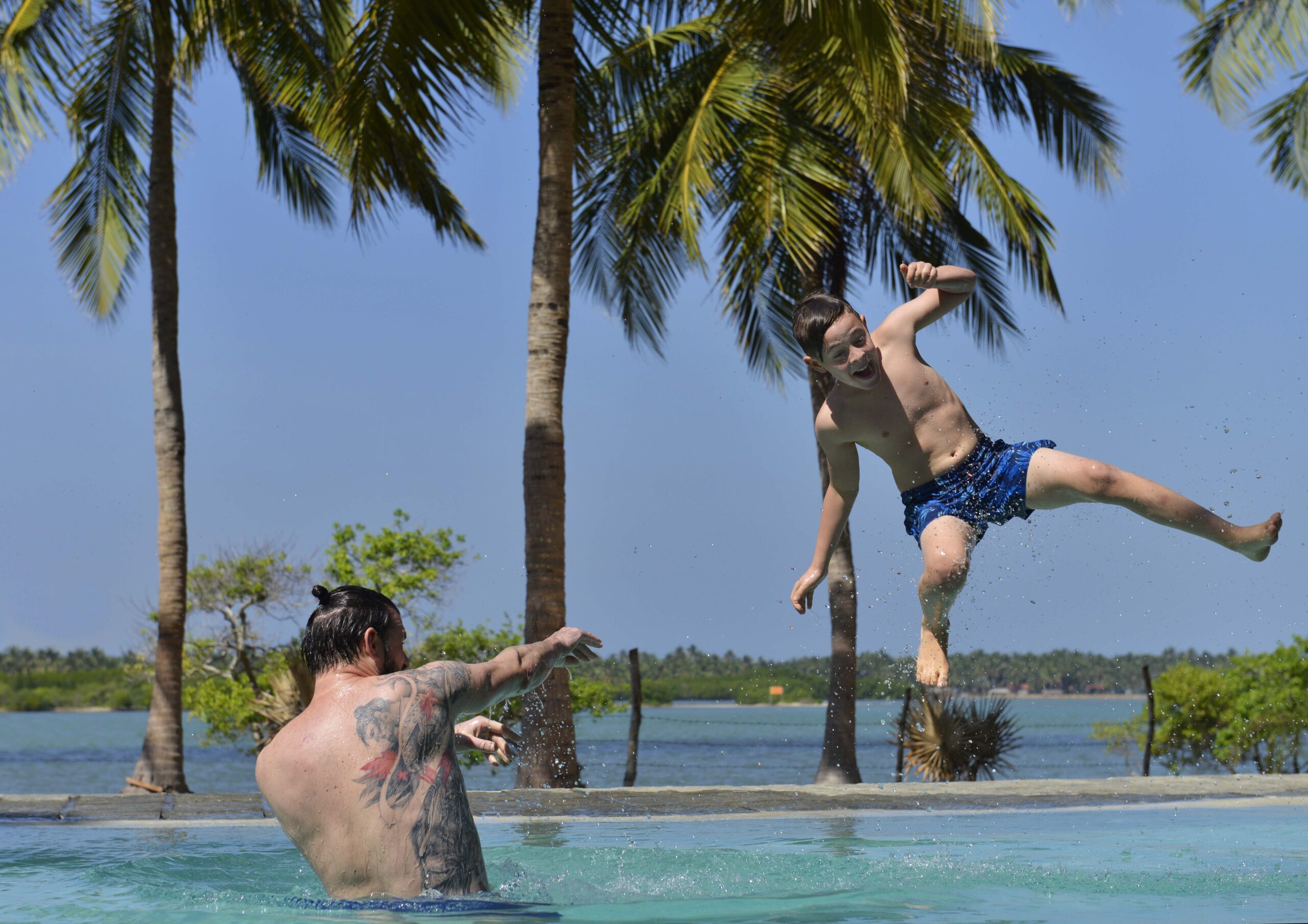
You’ve probably heard it a few times, learning how to hydrofoil is hard, difficult, tough, painful, scary… But hey, nothing good ever comes without effort! Hydrofoiling shouldn’t scare you as it is perfectly safe and not too hard to master if you learn in a safe environment.
We’ve put together a little blog post to help you master the waterstart, and we’re also running foiling lessons all winter!
FIRST THINGS FIRST
In our Vayu blog, we gave an introduction about hydrofoiling and what the right setup for a beginner should be, let’s recap;
1 : Choose a big board with loose straps
2 : Start with a short mast
3 : Choose a big wing
4 : Choose a kite size that is balanced and stable, preferably the same as you would on a twin-tip
Now that you’re all set up and ready to go, make sure to go somewhere with deep enough water so you don’t risk damaging your board. The perfect conditions, of course, would be where you can still stand but the wing is not able to hit the bottom. When entering the water, lift the mast above the water and continue walking until you’ve reached an adequate depth.
You’ve probably heard that foiling is ideal for light wind conditions, and that’s true, however, when learning how to hydrofoil, it’s best to go out in normal conditions. You won’t have to move the kite too much and waterstart will be a lot less difficult. Also, make sure there are no obstacles nearby and you have lots of open space downwind. Furthermore, wear a helmet and lifejacket and if possible, shin protection too.
WATERSTART WITH A HYDROFOIL BOARD
So you’re in position, the wind is blowing through your hair, the stoke is rising, you are ready! Let’s go!
1 : Kite movement
The kite movement for kitefoiling or hydrofoiling isn’t different from twin-tip riding. As mentioned before, learning the waterstart on a foil board is better when you’re using (loose) foot straps. Position the kite at 12 o’clock and connect your feet to the board. Next, you’ll want to send the kite downwards and back up until you’ve reached enough speed. Pull the bar in and turn when the kite is going downwards and let the bar out when the kite is going upwards. Keep the kite at 45 once you’re well balanced and powered up.
2 : Board movement
When you’ve sent the kite downwards and you get that first boost of power, position the board downwind and get up on the board in a level position. The board is still on the water and not yet floating through the air. It’s very important that you put some pressure on your front foot instead of on the back foot like you would do when you ride a twin-tip. It’s all about the front foot when you’re hydrofoiling. Try to maintain balance, keep the board on the water, and ride in a stable position downwind with the kite at 45.
3 : Lifting the board out of the water
It’s the moment of truth, you’re riding comfortably downwind and you want to start flying. Slowly but steadily, start putting a bit of pressure on your back foot. Make sure not to push the back foot too hard in one go but ease into it. The board doesn’t need a lot to get out of the water and to much pressure on the back foot will result in a catastrophic launch out of the water. Once the board starts to lift out of the water, it’s time to balance it by pushing on the front foot again. You’ll need some time to master it so be patient and try to lift the board out of the water a few times until you’ve mastered balance while still keeping the board level and downwind.
4 : Riding upwind
Now that you’ve mastered riding in a level position, it’s time to lean a bit backwards like you would do on a twin-tip. Keep the board balanced by applying pressure on the front and back feet as you’ve learned before. When you have enough speed and the kite is in a stable position, this step shouldn’t be too hard and most people will get in the upwind position easily as it’s the same position when riding a twin-tip.
5 : Turning
At first, it’s a good idea to stop after 100 – 200 meter, fall in the water and turn the board by hand before riding back. After mastering the previous steps, it’s time for you to start turning the board in a without it ever touching the water. Again, it’s all about the front foot! First, tilt your body in the position you want to go. next, you’ll want to move your front foot in this direction as well. The board will follow this movement and start turning. Stop the turn again by using your front foot while maintaining balance.
HOW TO CRASH SAFELY
When learning how to hydrofoil, or any new skill really, crashing is inevitable but don’t let this bring you down, practice makes perfect. Make sure your foot straps are loose so you can ditch the board whenever you’ve become unbalanced, you do not want to get hit by the mast when you fall. Whenever you crash, you want to move as far away from the direction the board is going in, so try to crash forward away from the board. Keep your distance from the board until it has come to a complete standstill.
Remember to always wear a helmet, a lifejacket and, if possible, shin protection too.


